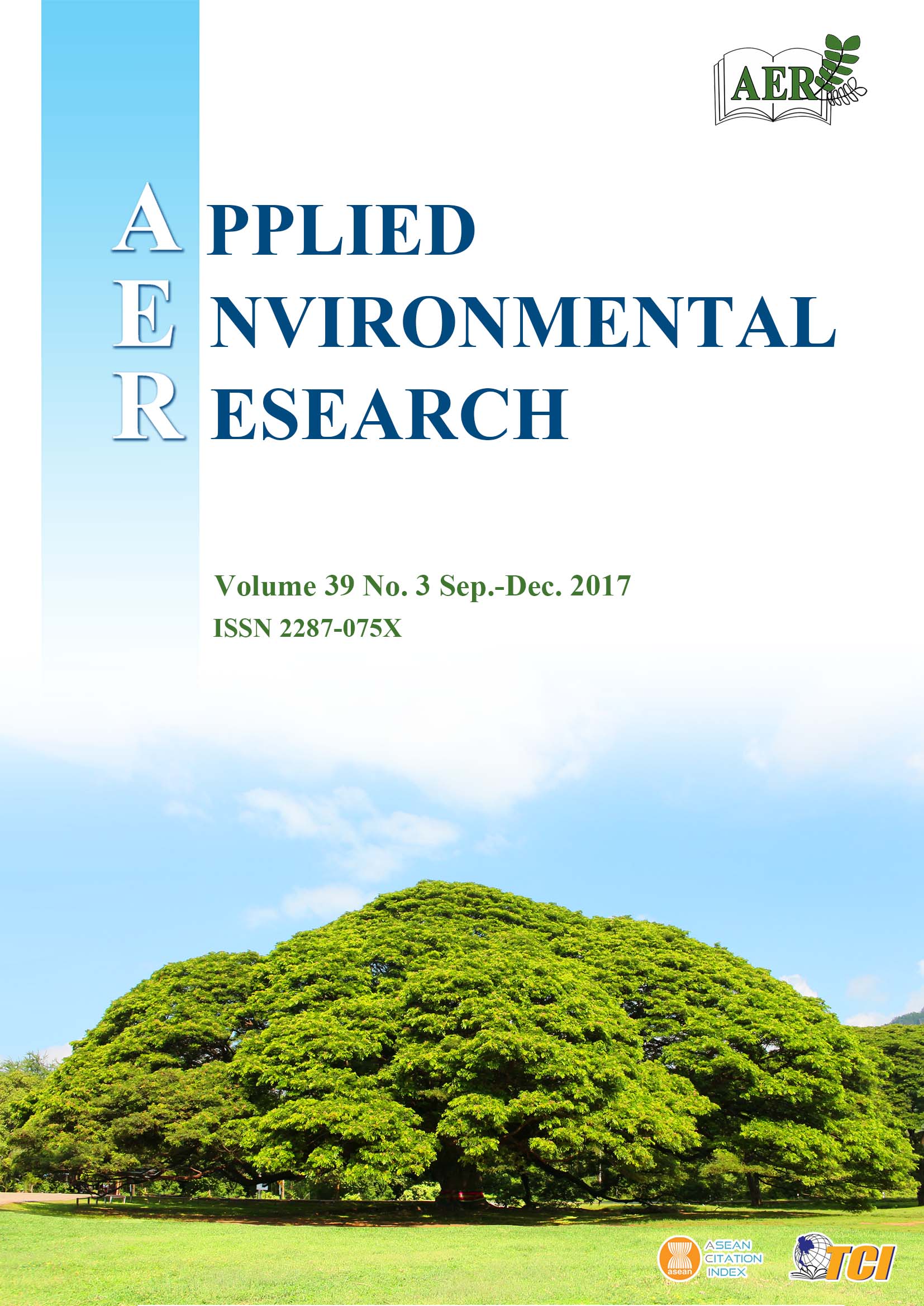Analysis of Air Quality Impacts on Human Health Using the Geoinformatics Application: Chiang Rai Province
Main Article Content
Abstract
This research aims to study air pollution dispersion in Chiang Rai Province, Thailand. The relationship between air pollutants, meteorology and population health were considered. The levels of air pollutants were used to establish a spatial and temporal analysis by Inverse Distance Weighted (IDW) interpolation from Geographic Information Systems (GIS), involved with occurrences of disease cases in the study area. The average monthly air pollution data were collected from Thailand’s Pollution Control Department and data on respiratory disease were collected from Chiang Rai Provincial Public Health Office during 2011 to 2014. The results indicated that monthly average PM10 concentrations started to rise from December to April. PM10 concentrations peaked during the hot season of every year, when open burning is prac-ticed. During this period, PM10 levels exceeded Thailand’s national ambient air quality standards of 120 µg m-3. Accumulative influenza and pneumonia cases in Chiang Rai Province were very high in Chiang Rai city centre. The spatial temperature distribution map showed higher incidence of cases of influenza and pneumonia throughout the lower temperature area of Chiang Rai city centre. Influenza was affected by PM10, rainfall, relative humidity, and temperature, according to the following correlation ratios: 0.8217, 0.8842, 0.9375 and 0.8775, respectively. The incidence of pneumonia was affected by rainfall, relative humidity and temperature following the correlation ratios 0.7746, 0.7621 and 0.9684, respectively. Whereas PM10 was low associated with pneumonia as a significant ratio was 0.6079. Pneumonia incidence decreased when rainfall and temperature decreased, and increased when relative humidity increased.
Article Details

This work is licensed under a Creative Commons Attribution-NonCommercial 4.0 International License.
Published articles are under the copyright of the Applied Environmental Research effective when the article is accepted for publication thus granting Applied Environmental Research all rights for the work so that both parties may be protected from the consequences of unauthorized use. Partially or totally publication of an article elsewhere is possible only after the consent from the editors.

